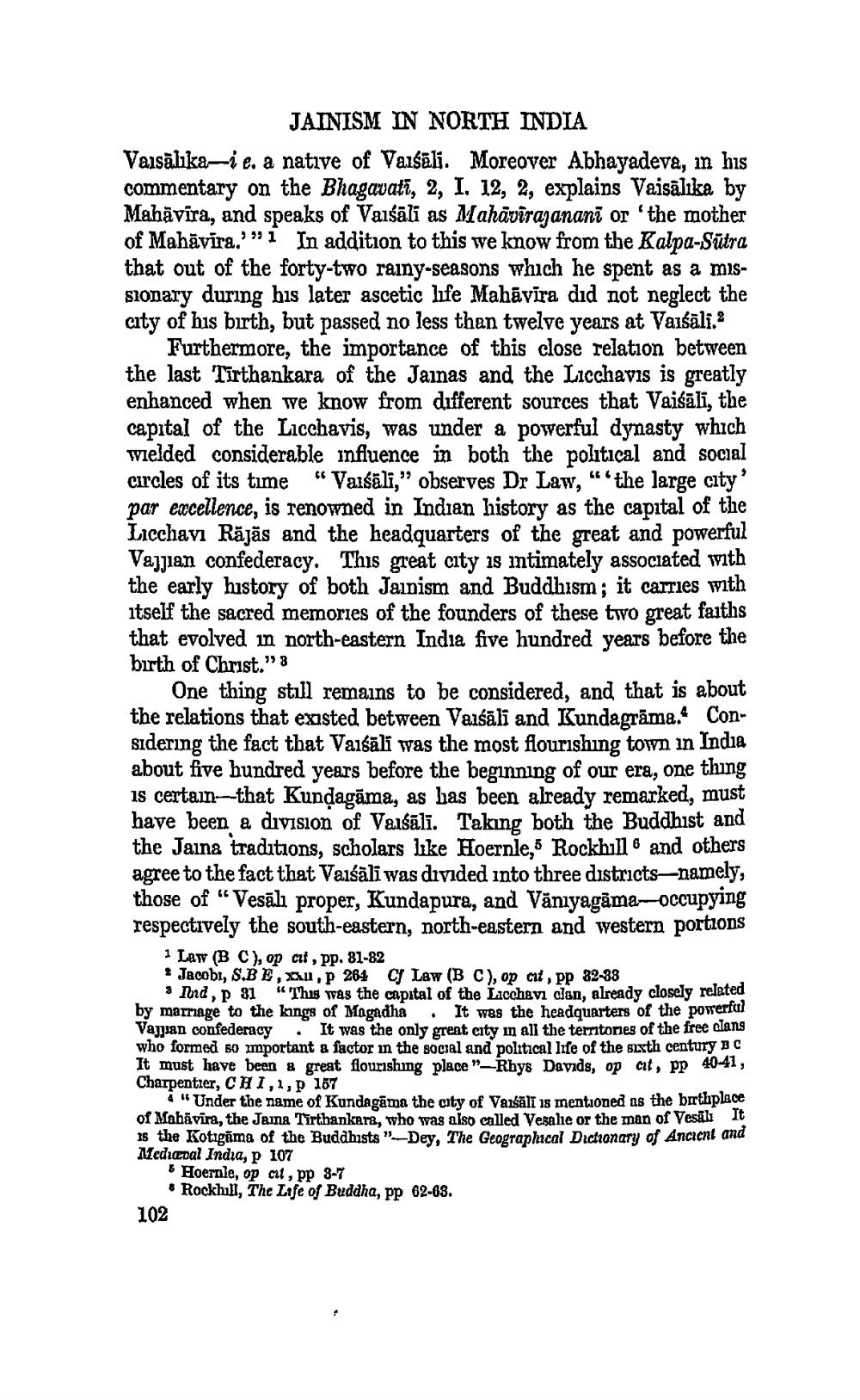________________ JAINISM IN NORTH INDIA Vaisalika-i e. a native of Vasali. Moreover Abhayadeva, in his commentary on the Bhagavati, 2, I. 12, 2, explains Vaisalika by Mahavira, and speaks of Vaisali as Mahavirajanani or the mother of Mahavira."" 1 In addition to this we know from the Kalpa-Sutra that out of the forty-two rainy-seasons which he spent as a missionary during his later ascetic life Mahavira did not neglect the city of his birth, but passed no less than twelve years at Vaisali. Furthermore, the importance of this close relation between the last Tirthankara of the Jainas and the Licchavis is greatly enhanced when we know from different sources that Vaisali, the capital of the Licchavis, was under a powerful dynasty which wielded considerable influence in both the political and social circles of its time "Vaisali," observes Dr Law, "the large city' par excellence, is renowned in Indian history as the capital of the Licchavi Rajas and the headquarters of the great and powerful Vajjian confederacy. This great city is intimately associated with the early history of both Jainism and Buddhism; it carries with itself the sacred memories of the founders of these two great faiths that evolved in north-eastern India five hundred years before the birth of Christ." One thing still remains to be considered, and that is about the relations that existed between Vaasali and Kundagrama. Considering the fact that Vaisali was the most flourishing town in India about five hundred years before the beginning of our era, one thing is certam-that Kundagama, as has been already remarked, must have been a division of Vasali. Taking both the Buddhist and the Jaina traditions, scholars like Hoernle, Rockhill and others agree to the fact that Vaisali was divided into three districts-namely, those of "Vesali proper, Kundapura, and Vaniyagama-occupying respectively the south-eastern, north-eastern and western portions 1 Law ( BC), op at, pp. 81-82 Jacobi, S.BE , ,P 264 C Law (BC), op cit, pp 82-33 3 Iord, p 81 "This was the chpital of the Loohgvi clan, already closely related by marriage to the kings of Magadha It was the headquarters of the powerful Vapian confederacy . It was the only grent city in all the territories of the free alang who formed Bo important a factor in the social and political life of the sixth century DC It must have been a great flourishing place "-Rhys Davids, op cit, PP 40-41, Charpentier, CHI,1,P 157 "Under the name of Kundaga pa the city of Vausali 18 mentioned as the birthplace of Mahavire, the Jamna Tirthankare, who was also called Vesalie or the man of Vesali 10 15 the Kotiguma of the Buddhists"-Dey, The Geographical Dictionary of Ancient and Medwal India, P 107 5 Hoernle, op at, pp 8-7 * Rockhult, The Lafe of Buddha, pp 62-68. 102




